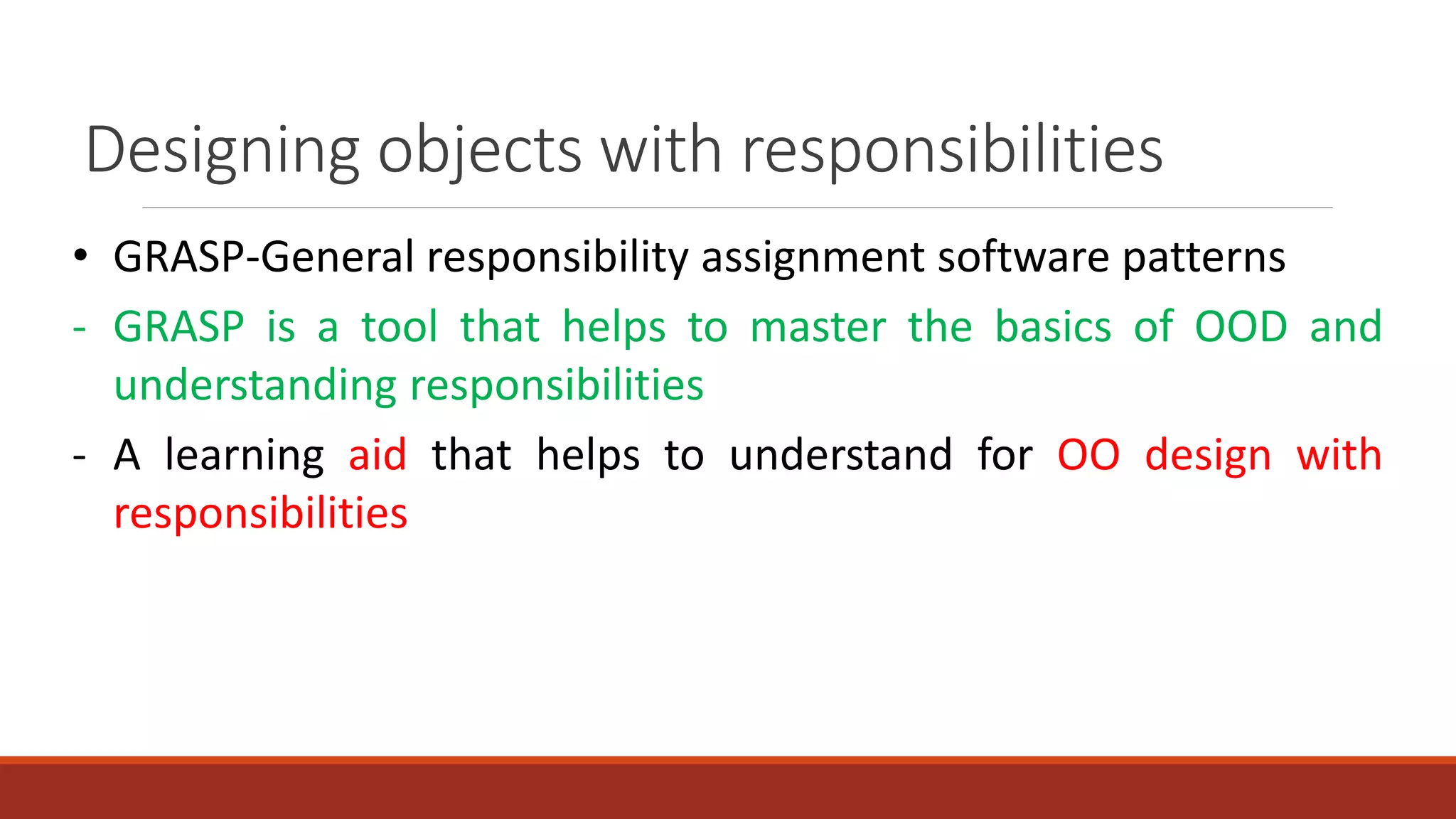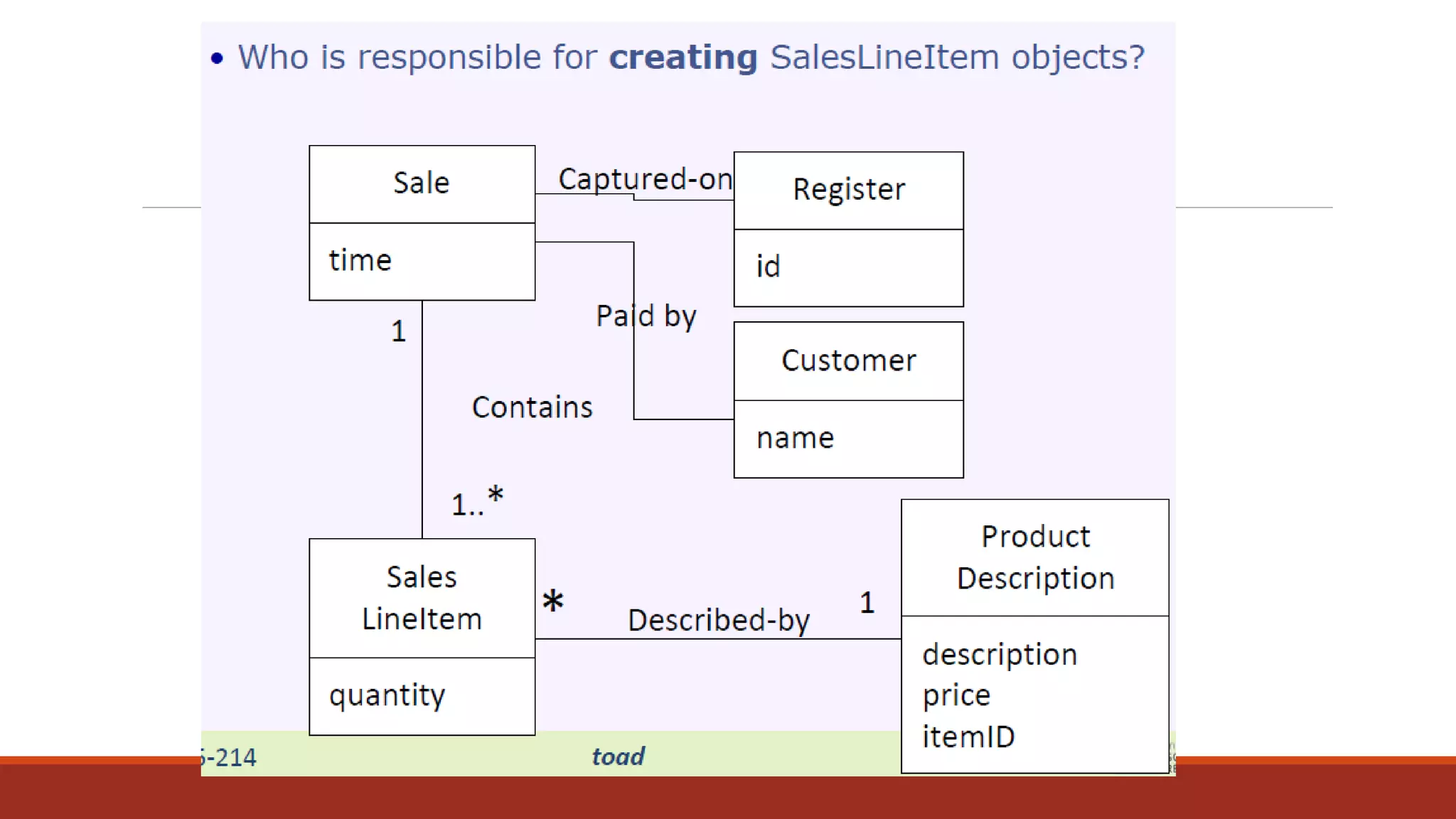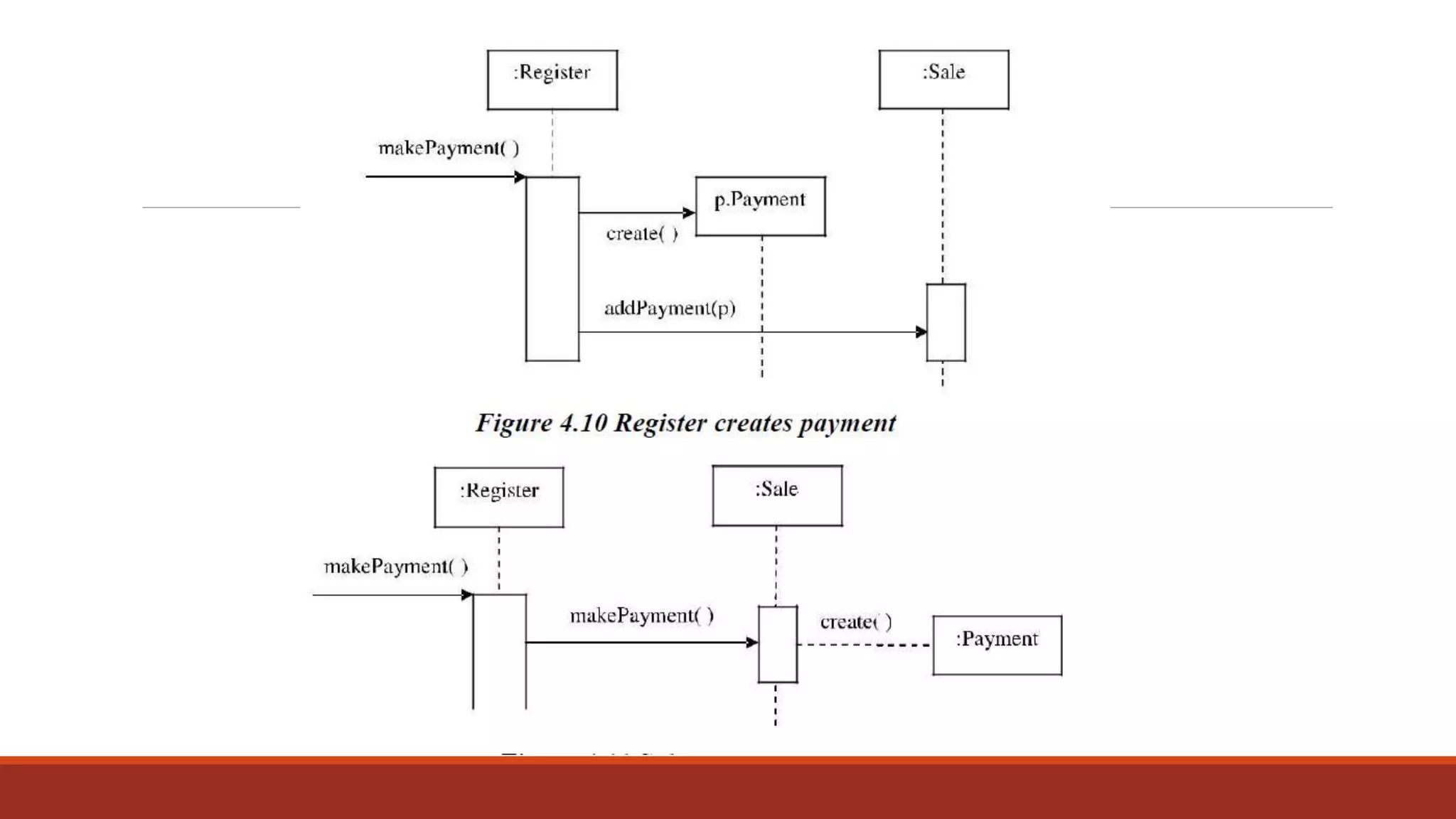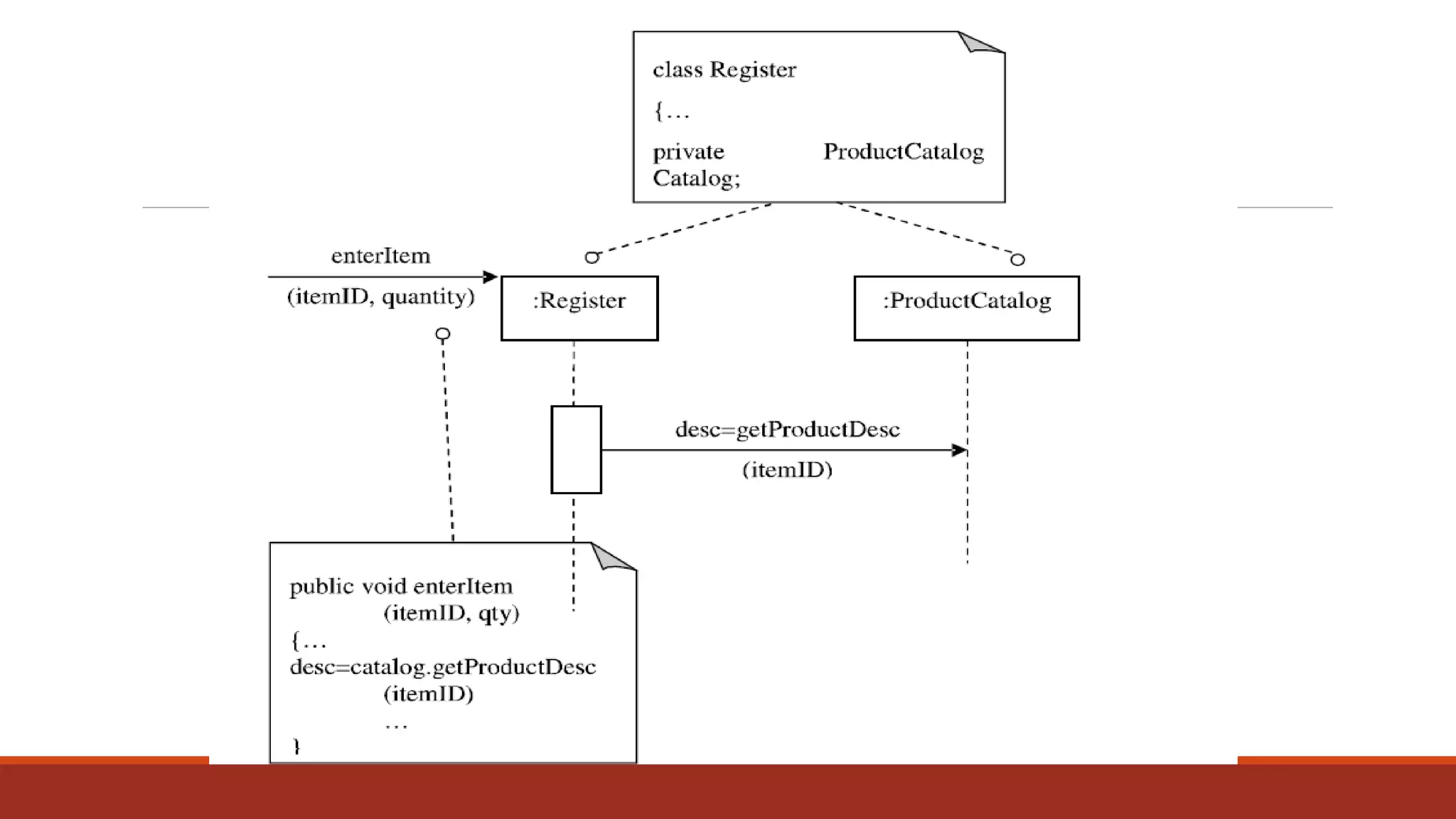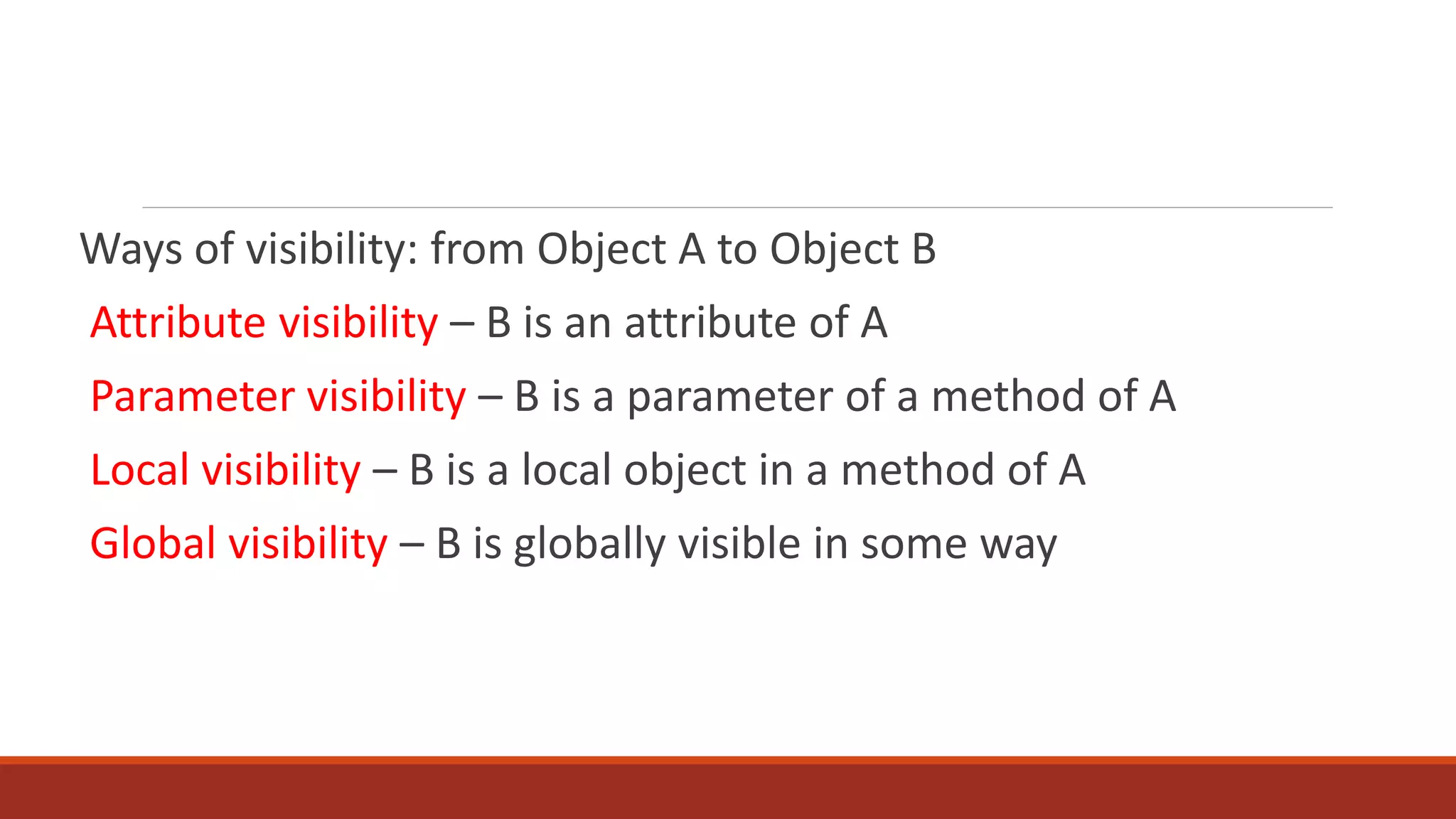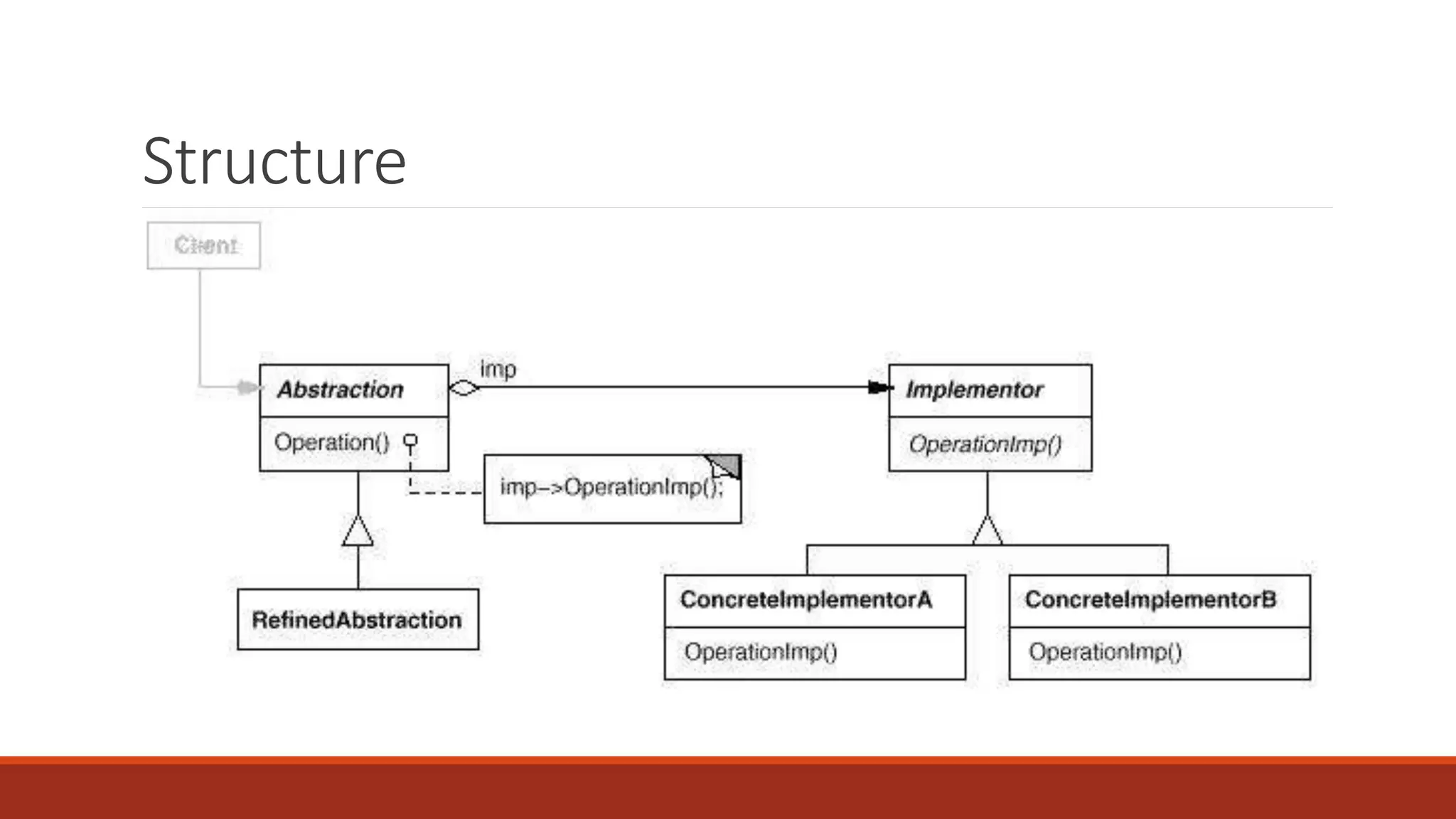The document discusses design patterns used in object-oriented programming. It describes common design patterns like factory method, singleton, observer, and adapter patterns. It also discusses principles for assigning responsibilities to objects like high cohesion and low coupling. The document provides examples of applying these patterns and principles to design software objects and systems.



